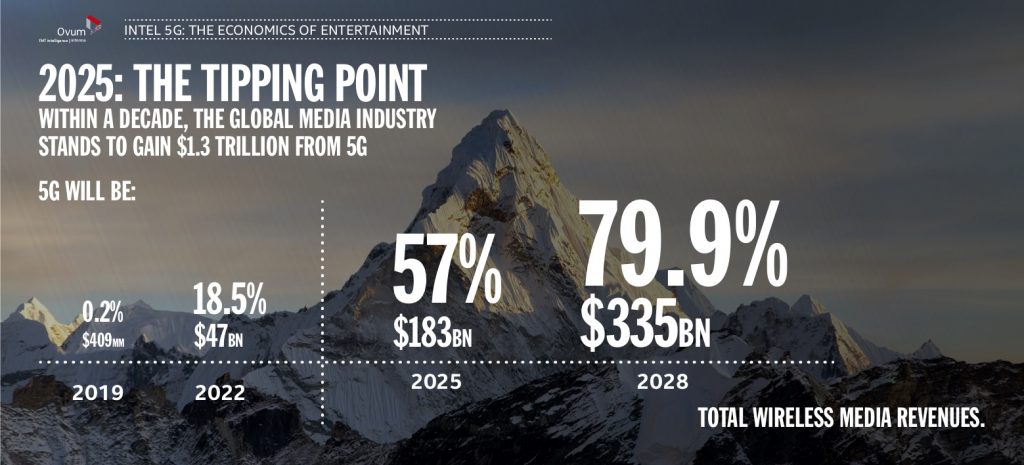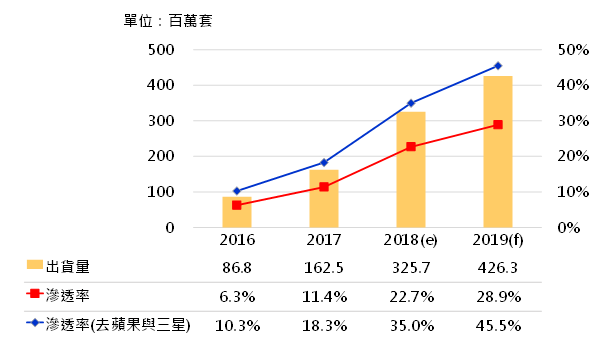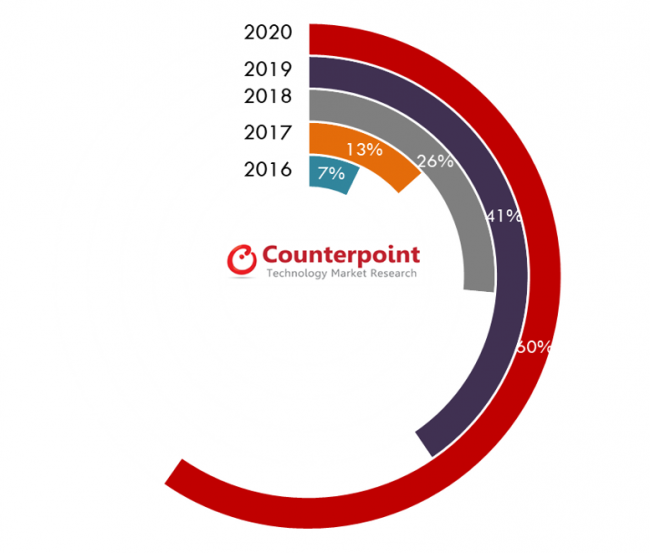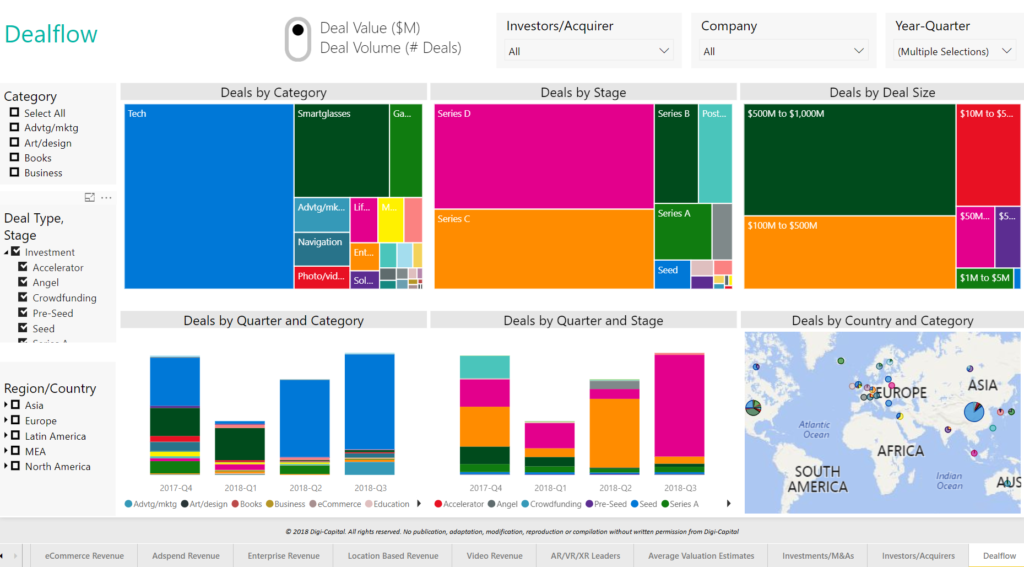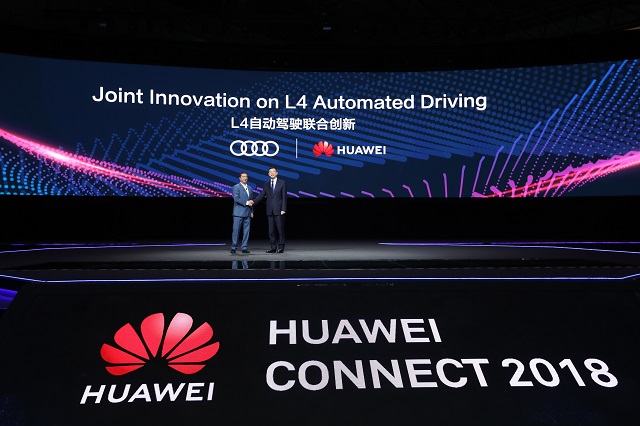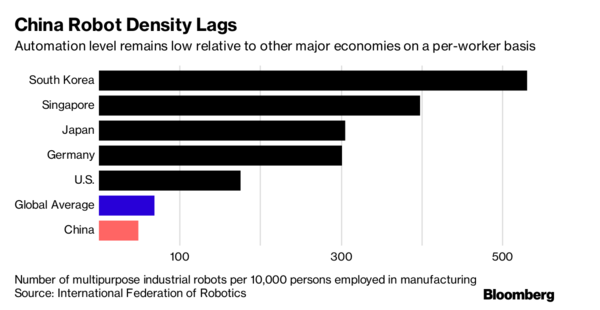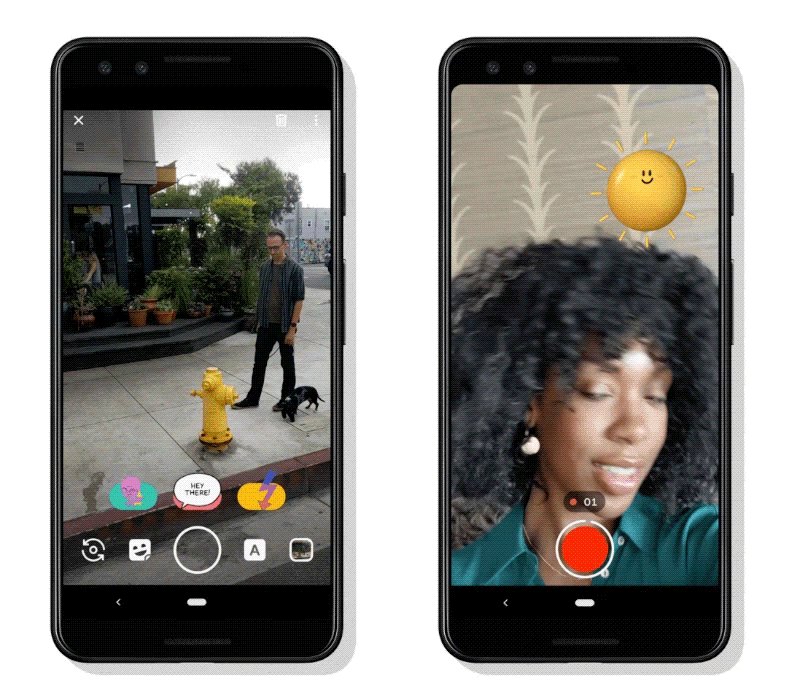
10-14: Google has rebranded its AR Stickers feature to Playground; Huawei and Audi show their future plans of a cooperation; etc.
Chipsets
According to the newly released “5G Economics of Entertainment Report” commissioned by Intel and conducted by Ovum, it is forecast that over the next decade (2019-2028) media and entertainment companies will be competing to win a share of a near USD3T cumulative wireless revenue opportunity. Experiences enabled by 5G networks will account for nearly half of this revenue opportunity (close to USD1.3T). (Intel, key findings, CN Beta, Light Reading, Qianzhan)
Touch Display
Global shipments of TDDI (touch and display driver integration) chips are expected to more than double to 326M units in 2018, propelled by surging demand, according to an estimate of Digitimes Research. Novatek Microelectronics managed to outrace rivals Synaptics and FocalTech System to become the largest supplier of TDDI chips in the 2Q18, buoyed by its ability to secure sufficient capacity from wafer foundry houses. (Digitimes, press, Digitimes, Yahoo, LTN)
Material
Smartphones with glass backs are becoming popular as OEMs have lately started focusing more on CMF (colour material and finish) to differentiate their offerings in the crowded smartphone market. As per Counterpoint Research’s latest estimates, the overall penetration for smartphones with glass backs will reach 26% of total smartphone shipments by the end of 2018 and possibly 60% by the end of 2020. Smartphones with glass backs have already penetrated the premium segment (80%). (Android Authority, Counterpoint Research, blog, IT Home)
Phone
TF Securities analyst Ming-Chi Kuo is reporting that most Chinese phone manufacturers saw sales fall year-over-year during Golden Week (first week of Oct 2018). Kuo blamed insufficient innovation, and believes that some proportion of consumers are leaning on Apple’s older iPhone models or awaiting the iPhone XR. In terms of the Chinese domestic offerings, only Huawei saw an increase in shipments. Sales from vivo, OPPO and Xiaomi were disappointing. Overall, shipments from major Chinese brands fell 10%. (My Drivers, IT Home, Tech Node, 9to5Mac, Mac Rumors)
PC / Tablet
Even as Microsoft refreshed its lineup of Surface with updated specs earlier Oct 2018, Canalys CEO Steve Brazier is sticking by his prediction from 2017 that the Surface line will die in 2019. (CN Beta, Neowin, The Register)
Augmented / Virtual Reality
According to Digi-Capital, in 4Q18, Chinese computer vision / AR market investment surging to USD3.9B in the last 12 months, while North American AR / VR market investment fell from nearly USD1.5B in 4Q17 to less than USD120M in 3Q18. At the same time, VC sentiment on VR softened significantly. Mobile AR is very early stage, and could see USD50M~100M exits in 2018/2019. (VentureBeat, Digi-Capital, press)
Google has announced that its AR Stickers feature, which can be found inside the Pixel’s camera app, is being re-branded as Playground. (Upload VR, VentureBeat, 9to5Google, Baijiahao, CIT News)
Automotive
Huawei and Audi show their future plans of a cooperation in the field of intelligent connected vehicles (ICV), featuring the new Audi Q7 as a demonstration of this state-of-the-art technology. The partnership will focus on creating so-called Level 4 technology, which the Society of Automotive Engineers defines as a car that completely drives itself from start to finish within a specifically designated area. (The Verge, Huawei, CN Beta)
Dyson has committed GBP2B (USD2.6B) to produce an electric vehicle by 2021 and said in Aug 2018 it planned to invest a GBP116M (USD151M) to build 10 miles of test tracks and offices for 2,000 workers at a former Royal Air Force base in England. (CN Beta, Gulf Business)
Robotics
The China market will become the main source of growth in global demand for industrial robots. There were 380,600 industrial robots sold globally in 2017, growing 29% on year, with 138,000 or 36.3% of them shipping to China, hiking 58% on year, according to the International Federation of Robotics (IFR). In China, only 68 industrial robots were used per 10,000 workers in 2017, with the density much lower than South Korea (631), Singapore (483), Germany (309) in Germany and the global average (74), implying there is huge growth potential for industrial robots in China, Digitimes Research believes. (Digitimes, press)
